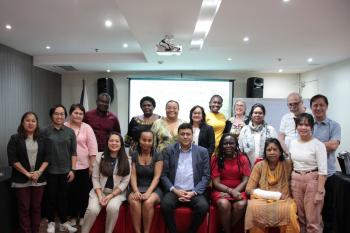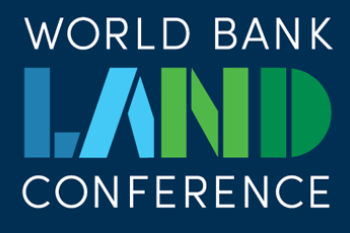
Securing land tenure with smartphones
By Linus Pott. Republished from the The Sustainable Cities blog.
More than 1,000 years. That’s how long recent estimates suggest it would take in some developing countries to legally register all land – due to the limited number of land surveyors in country and the use of outdated, cumbersome, costly, and overly regulated surveying and registration procedures. But I am convinced that the target of registering all land can be achieved – faster and cheaper. This is an urgent need in Africa where less than 10% of all land is surveyed and registered, as this impacts securing land tenure rights for both women and men – a move that can have a greater effect on household income, food security, and equity.
The question remains, how can we register land and secure tenure at scale?Perhaps one of our answers can be found in rural Tanzania where I recently witnessed the use of a mobile surveying and registration application. In several villages, USAID and the government of Tanzania are piloting the use of the Mobile Application to Secure Tenure (MAST), one of several (open-source) applications available on the market. DFID, SIDA, and DANIDA are supporting a similar project. The process of mobile land surveying and registration goes like this:
-
Photo by Linus Pott / World Bank
A standard tablet or smartphone connected to a GPS receiver is used.
- In the presence of land rights holders and neighbors, community members are trained to use the application to record individual and communal land boundary and ownership information.
- Afterwards, a public display period for objection and correction is carried out to ascertain consensus.
- The data is automatically stored in a database once the device gains internet access – and when this is finally approved by government authorities.
It should also be noted that the usefulness of the technology depends on the context. In some cases, using the technology might require amendments of laws or regulations. And we are still exploring the question of how to adapt it to high-density urban areas.Of course, technology is not the silver bullet for securing land tenure. It is very important to raise awareness of landholders on the processes and benefits of participation in the process and registration. Therefore, we need to create incentives for landholders to participate in land registration activities and make land certificates a desirable asset – for example, by linking them to access to (micro-)finance or agricultural inputs, developing alternative land dispute resolution mechanisms, and exploring innovative models for landholders to participate directly in negotiations with potential investors. Also, land information systems and the geospatial infrastructure as well as policy and legal reform will be necessary for a systemic approach. Capacities to manage such reforms to secure tenure at scale are necessary as well. Despite the caveats, I think that we are at a point in history where the recording of land rights is cheaper, faster, and more inclusive than ever before. Positively disruptive, don’t you think?


